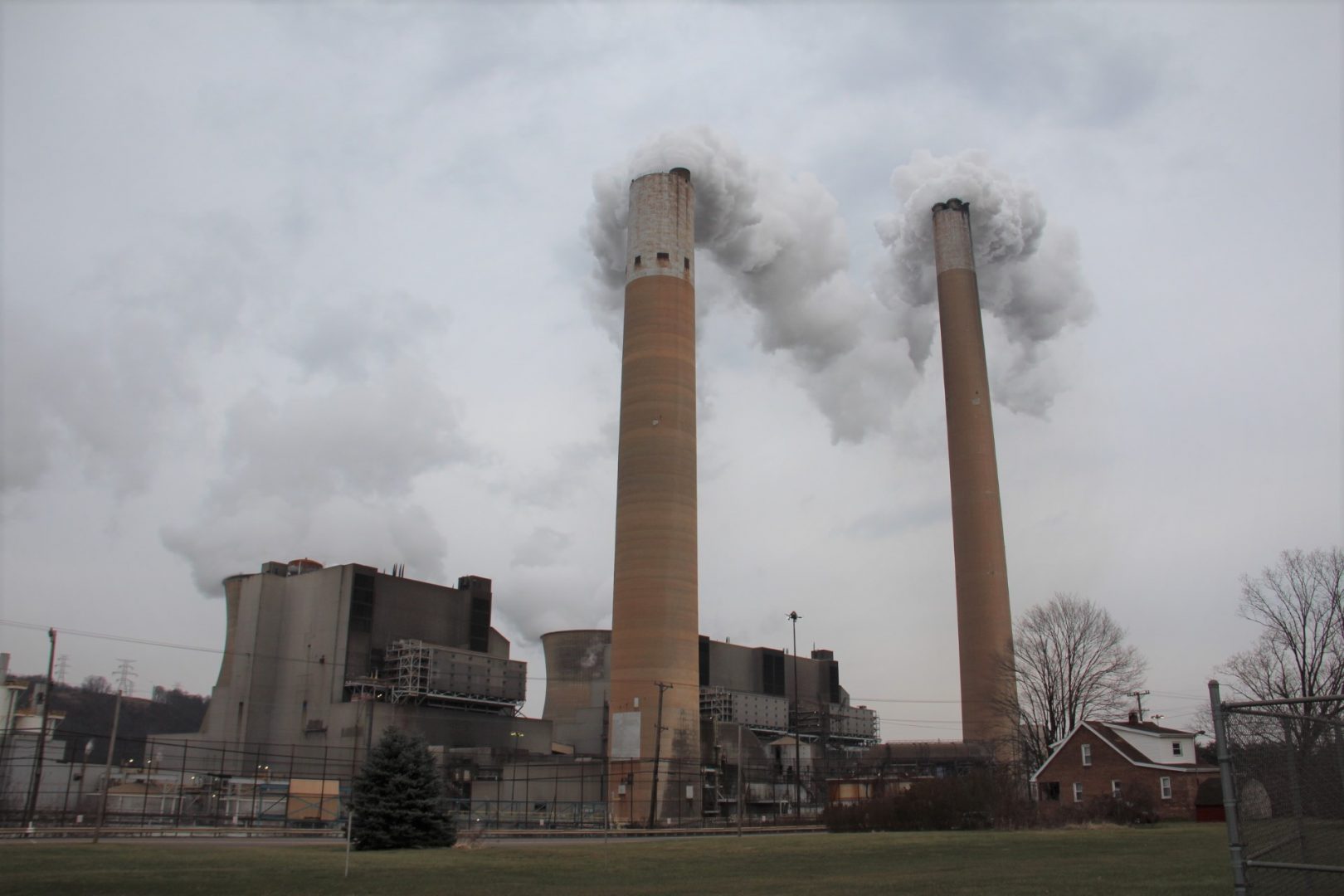
Bruce Mansfield coal-fired power plant in Shippingport, Pa., which was retired early in November 2019.
Reid R. Frazier / StateImpact Pennsylvania


Bruce Mansfield coal-fired power plant in Shippingport, Pa., which was retired early in November 2019.
Reid R. Frazier / StateImpact Pennsylvania

Reid R. Frazier / StateImpact Pennsylvania
Bruce Mansfield coal-fired power plant in Shippingport, Pa., which was retired early in November 2019.
New research from Carnegie Mellon University in Pittsburgh shows thousands of lives could be saved each year if air quality standards were tightened.
Two recent studies published in the journals Environmental Health Perspectives and PLOS Medicine looked at mortality rates across the United States related to fine particulate matter— pollution that can get into the lungs and contribute to cardiovascular and respiratory diseases. The current standard is an annual average of 12 micrograms per cubic meter of air.
Allen Robinson, director of CMU’s Center for Air Quality, Climate and Energy Solutions and his co-authors found more than 30,000 lives could be saved annually if it were more stringent.
“To put that in perspective—the 30,000 number—it’s comparable to the number of people who die each year in car accidents,” he said.
Although huge gains have been made in cleaning up the nation’s air, he said the findings show people are still dying early.
“People know air pollution is bad,” said Robinson. “We’re saying it’s bad even at quite low levels.”
The two studies used large national sets of data. Although each relied on different data sets and statistical models the outcomes were consistent. Collaborators included researchers from Cornerstone Research, Harvard University, Health Canada, the National Cancer Center (Korea), the University of Chicago, and the University of Washington.
George Thurston, professor of environmental medicine and population health at NYU’s School of Medicine, has examined the health effects of air pollution for decades and was not involved in either study.
He said the papers offer new insights because they involved large numbers of people, including younger adults.
“We’ve been estimating from the older people, and applying it to the population,” Thurston said of previous research. “So we’ve been missing some of the depth. We’ve probably been underestimating the effects of air pollution.”
StateImpact Pennsylvania is a collaboration among WITF, WHYY, and the Allegheny Front. Reporters Reid Frazier, Rachel McDevitt and Susan Phillips cover the commonwealth’s energy economy. Read their reports on this site, and hear them on public radio stations across Pennsylvania.
(listed by story count)
StateImpact Pennsylvania is a collaboration among WITF, WHYY, and the Allegheny Front. Reporters Reid Frazier, Rachel McDevitt and Susan Phillips cover the commonwealth’s energy economy. Read their reports on this site, and hear them on public radio stations across Pennsylvania.
Climate Solutions, a collaboration of news organizations, educational institutions and a theater company, uses engagement, education and storytelling to help central Pennsylvanians toward climate change literacy, resilience and adaptation. Our work will amplify how people are finding solutions to the challenges presented by a warming world.